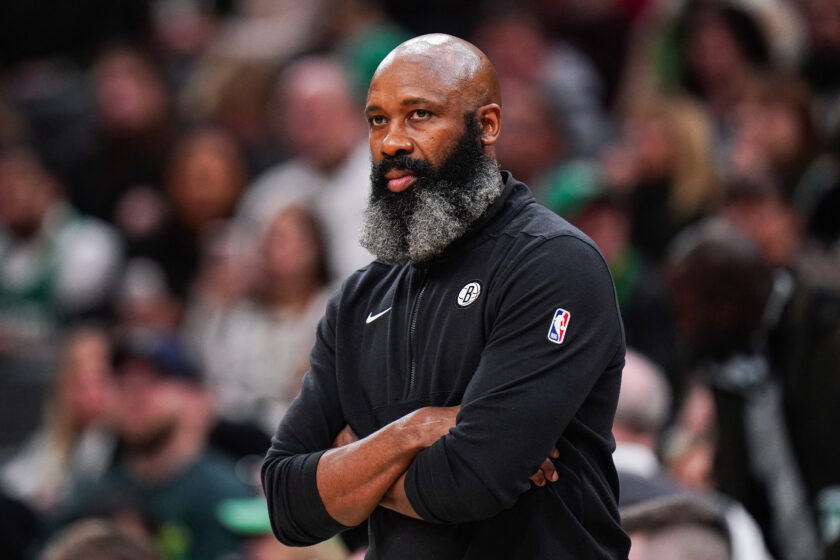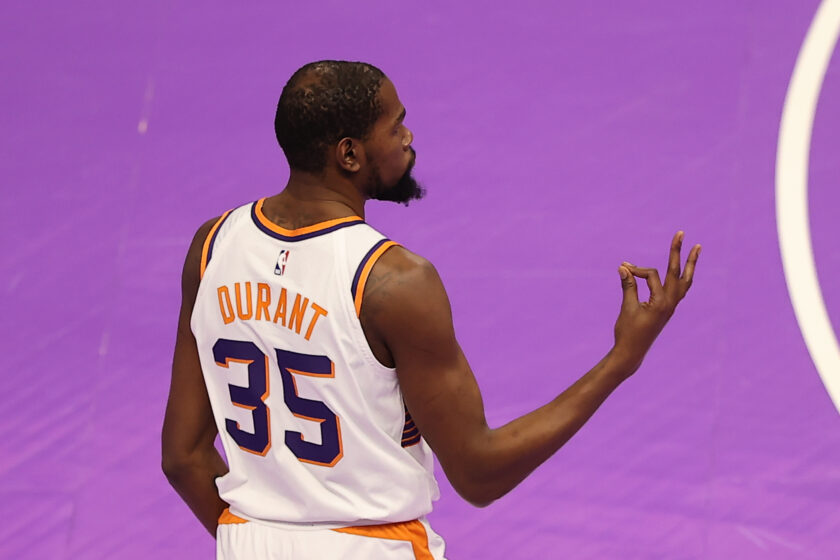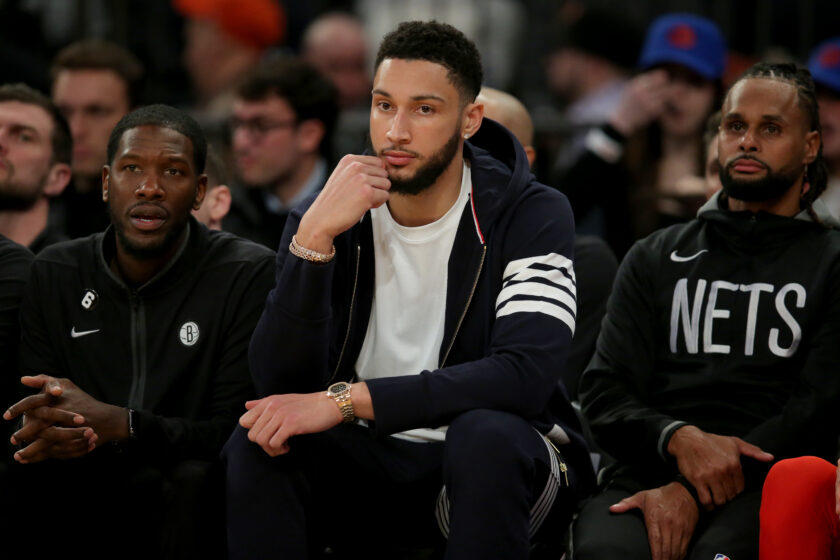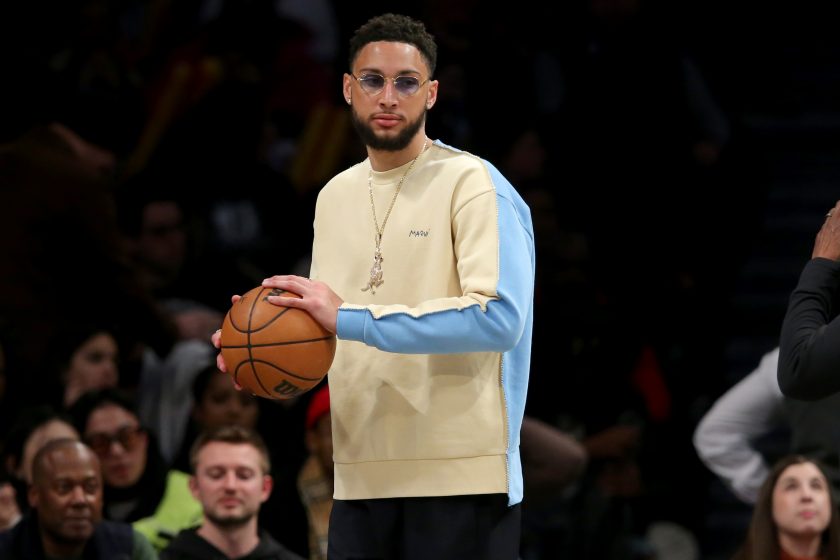Breaking down Kyrie Irving’s 50-point Brooklyn Nets debut (Film Room)
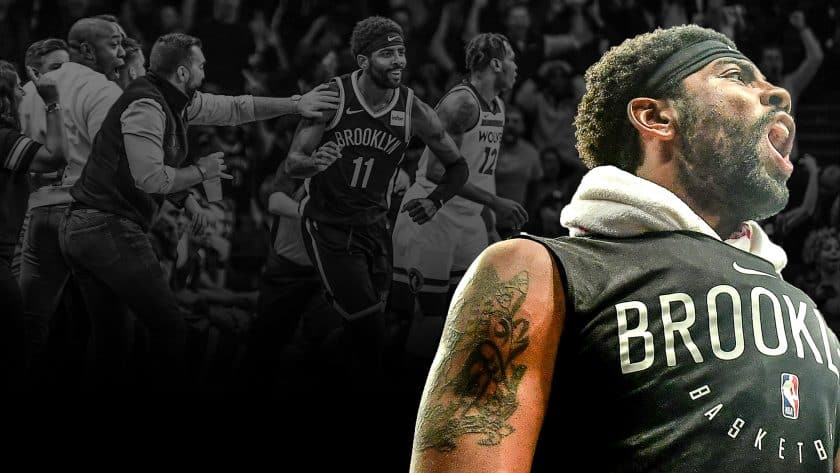
The Brooklyn Nets lived and eventually died by Kyrie Irving during their season-opening loss, but it wasn’t without some spectacular moments.
Early Wednesday night, I opened the Brooklyn Nets channel in the ESNY Slack and called “dibs on a Kyrie Irving breakdown after he drops 50.” It was light-hearted, a joke signaling my anticipation of a potential explosion from the All-Star point guard. I was not expecting to be penning this piece. But here we are. Instead of finishing with a more reasonable point total like 26 or 32, Irving put the team on his back and accumulated half-a-century’s worth of points.
The Nets defeat on opening night was heart-breaking. It featured a 127-126 final, with Irving missing the go-ahead shot as time expired. The team’s tremendous inconsistencies kept the game close, as did 36 points from Karl-Anthony Towns. Irving, however, was undoubtedly the best player on the floor and gave Brooklyn several chances to secure the victory. His efficiency was remarkable: 17-of-33 from the floor, 7-of-14 from three, 9-of-10 from the line. Additionally, he dished out seven dimes without registering a single turnover.
At times, Brooklyn’s offense looked disjointed. Their passing was dry. Ultimately, the team finished with 19 assists and 16 turnovers. Such a mark was almost as horrid as their 57.6 percent clip from the line. If it weren’t for Irving, the game would’ve been a blowout. Kenny Atkinson realized that. He decided to ride Irving until the wheels fell off, which meant a steady dose of pick-and-roll — 22 of his 37 offensive possessions, to be exact.
Kyrie Irving’s first official bucket as a Brooklyn Net was, in fact, a failed pick-and-roll. About two-and-a-half minutes into the contest, defended by Jeff Teague, Irving planted himself on the left-wing. Irving sized him up as Jarrett Allen came over to set a screen. With Allen in motion, Irving attacked and got a slight step on Teague as he drove right. Teague, however, did a solid job not getting beat and forced Irving into a pullup jumper from the elbow. The ball went up, touched every part of the rim and bounced in. It was a difficult shot. And that theme would persist throughout the contest.
Fortunately for the Nets, Irving is an extraordinary tough shot maker. It’s a skill that only the league’s best have mastered. Irving is in a pantheon with guys like Kevin Durant, LeBron James and Stephen Curry because there’s no part of the floor where he’s not dangerous.
For brevity, not all of Kyrie Irving’s makes will be included. When a player has such an inflated number of converted field goals, at least a handful of them are bound to be routine plays — uncontested drives off the dribble, making spot-up jumpers, etc. Irving is not exempt from this.
One of Irving’s most impressive plays came shortly after tip-off. He’s not one to miss an opportunity to push the ball in transition. However, forcing the issue when your team doesn’t have numbers is a decision that drives coaches nuts. Unless the player doing so is of Irving’s caliber. On this possession, Brooklyn is running a two-on-three. Irving and Caris LeVert are the only two Nets in the frontcourt, and they’re met by Teague, Andre Wiggins and Robert Covington. Also, Karl-Anthony Towns is coming up from behind, chugging along like a freight train. None of it matters, though.
Irving gathers the ball just inside the free-throw line, keeping it away from Teague. Despite not being the most explosive, he lifts off high enough to kiss the ball off the glass. In the process, he avoided the outstretched arms of all three defenders. Irving is no stranger to those types of finishes. And he made it even better by counting how many guys he converted over.
On the subsequent bucket, we see Irving beautifully read a pick-and-roll. At this point, Noah Vonleh is in for Karl-Anthony Towns. He drew the assignment of Allen. Giving Allen a cushion is one thing, but notice how far back Vonleh is on this screen. Irving has acres of real estate to work with. Allen does a fantastic job of screening Teague, who has nowhere to go and no help. As soon as he steps over the pick, Irving knows that he’ll have an uncontested three because of where Vonleh is standing. He needs just one dribble to set his feet and swish.
There would’ve been no point in Irving — a 39.0 percent career three-point shooter — trying to penetrate because Vonleh would’ve stuffed him. The defensive execution, however, was likely botched. Vonleh should’ve been higher so he could blitz Irving as he came off the screen. Not only would that have raised the degree of difficulty of a potential attempt, but it also would’ve allowed Teague to get back into the play.
As halftime drew closer, the Nets found themselves falling behind quite considerably. With about eight minutes left in the second, Minnesota’s lead was 18. Atkinson needed the ball in Irving’s hands. He worked to get him in as many one-on-one opportunities as possible. To manifest that, Atkinson drew up a double screen. Joe Harris and DeAndre Jordan worked in tandem to shield Irving’s defenders and allow him to gather momentum going toward the basket. It worked quite well. Jake Layman drew the shortest straw by switching onto Irving. A subtle screen gave Irving the step on his man, but awaiting him in the paint was Vonleh, who again was playing far off. However, the difference in this play compared to the previous one is Layman. He fought hard over the screen and stayed on Irving’s hip. Even so, his effort proved futile.
As Irving gathered, he faked a lob pass, an action that bamboozled Layman. Now, it was just Irving and Vonleh. However, since Vonleh was retreating, he was unable to elevate. Irving took advantage of this and threw himself into Vonleh, which created more space for him to finish. On this surface, it looks like a routine layup, but shoving Vonleh is no easy task. The 24-year-old has a robust 257-pound frame and did a phenomenal job of standing straight up on that drive. Absorbing the contact and staying on balance requires tremendous body control, an attribute Irving uses in place of vertical explosiveness.
There is a laundry list of things that Kyrie Irving does well. He takes ankles; he nails clutch shots. But atop everything else is his uncanny ability to finish any shot around the basket, especially at his size.
Although Karl-Anthony Towns isn’t the NBA’s best defensive center, he’s an intimidating force. Anybody who stands seven-foot and weighs 250 pounds will make guards question their attack. But not Kyrie! After coming off another Jarrett Allen screen, Irving split Wiggins and Towns and somehow got this twisting layup to fall. Towns had excellent positioning, though, and the only reason he didn’t block that shot is that Irving gave him just enough of a shoulder to put him directly under the hoop. You can see his hand get caught in the net as Irving releases the ball.
Remember earlier when I said tough shots would be a recurring thing? Well, we have yet another. This attempt was nothing fancy, a product of a give-and-go between Irving and LeVert. The action was quick-hitting. LeVert came up from the right corner, caught the ball just inside the three-point line and hit Irving as he dashed into the corner. One second later, Irving is hit by Andrew Wiggins but somehow converted this absurd reverse layup at a seemingly impossible angle.
Thanks to 40 combined points from Caris LeVert and Kyrie Irving, the Nets trailed by only 12 at halftime. Throughout the third quarter, they looked like an entirely different team.
Brooklyn asserted themselves, dropping 37 points to Minnesota’s 20. Oddly enough, Irving was responsible for just five of those points. One was a pullup three. The other came after a dribbling clinic. Irving drove Andrew Wiggins into an Allen screen with a crisp behind-the-back dribble and then did a snatchback to create space on a 15-footer that he dropped in over Towns. Fading away slightly allowed him to further avoid Towns’ contest. It was peak Kyrie.
We’ve finally reached the fourth quarter. This period where Irving pulled up his boots and almost pushed the Nets to a victory. His stretch began with a floater. Former Net Shabazz Napier earned the chance to guard Irving. He promptly led him into a screen, blew by him and connected on a lefty floater in Karl-Anthony Towns’ face. Irving, however, got the jump because Napier decided not to give up the three. The score, with 6:33 remaining, was 101-98 Minnesota. Irving was dialed in, so the safer bet was to go under the screen and funnel him into the teeth of the defense and hope someone made a play.
That individual was Irving.
Late in a close basketball game, a coach gives his best player carte blanch to make something happen. The previous gameplan becomes irrelevant. The number one option goes out and does what they do best: get buckets. Sometimes, it works. Other times, it doesn’t. But it’s a risk the team takes. Over the final two minutes of Wednesday’s contest, Irving had back-to-back makes where he went right at Treveon Graham, testing him to slow him down. Graham failed both times. The first was rather routine. Graham switched on Irving, who then hit him with a scissor dribble into a stepback three. Barclays Center erupted as Irving gave Brooklyn the 109-108 lead. But the following bucket sent the arena into bedlam.
This time, Irving and Graham matched up on the left-wing. The game clock was inside 90 seconds. Kyrie Irving has broken hearts in the past, and he was in the position to add another team to that list. He dribbled under his right leg once. Then twice. He repeated the motion twice more before lurching forward and attacking Graham. He didn’t bite. Irving was forced to shovel the ball behind-his-back. But that was part of the combo, and he smoothly took a step back before hoisting up a 25-foot three with Graham standing in his personal bubble. Barclays gasped collectively. Ian Eagle let out an, “Oh no.” The ball hung in the air for eternity. It then began its descent and hit nothing but net as it crashed back onto the hardwood.
The magic of Kyrie Irving was on full display at that moment. He was the best show on TV Wednesday night. In his first game with the team he grew up watching, Irving opened with a bang and made an unforgettable impression, even if that contest ended with a loss.
Unfortunately, Irving was quiet in the overtime. He made two shots. The first was an uncontested layup, but the second was far more entertaining. After bricking a three from the top of the key, Irving followed his miss and wound up in the left corner. Taurean Prince hauled in the board and dished to the former champion, who collected himself and trimmed the lead to one. That difference, however, remained for the final two-and-a-half minutes.
Kyrie Irving’s Brooklyn Nets debut was one for the record books. It was the most ever in a Nets season opener, eclipsing Stephon Marbury’s previous mark of 39. Additionally, Irving became the fifth guy in league history to drop 50 on opening night, joining the likes of Michael Jordan, Elgin Baylor, Anthony Davis and Wilt Chamberlain. It was a magical performance, and I don’t think that adjective adequately describes it.
There is obviously a lot the Nets have to clean up going forward, but that’s to be expected after the first game. Regardless, Irving is going to be a constant, and they can take comfort knowing he’s not only their first option, but also their safety net.
[sc name=”Nets Link Next” link=”https://elitesportsny.com/2019/10/25/new-york-knicks-brooklyn-nets-preview-a-new-era-in-the-big-apple/” text=”Nets-Knicks Preview: A New Big Apple Basketball Era” ]I'm obsessed with basketball. I play (my hesi pull-up Jimbo is cash), I write and cover the Nets here at ESNY. My work has been seen on Bleacher Report, Sports Illustrated and FanSided. I also run my company, TBN Media. My favorite NBA player is Isaiah Thomas because I can look him in the eye.

